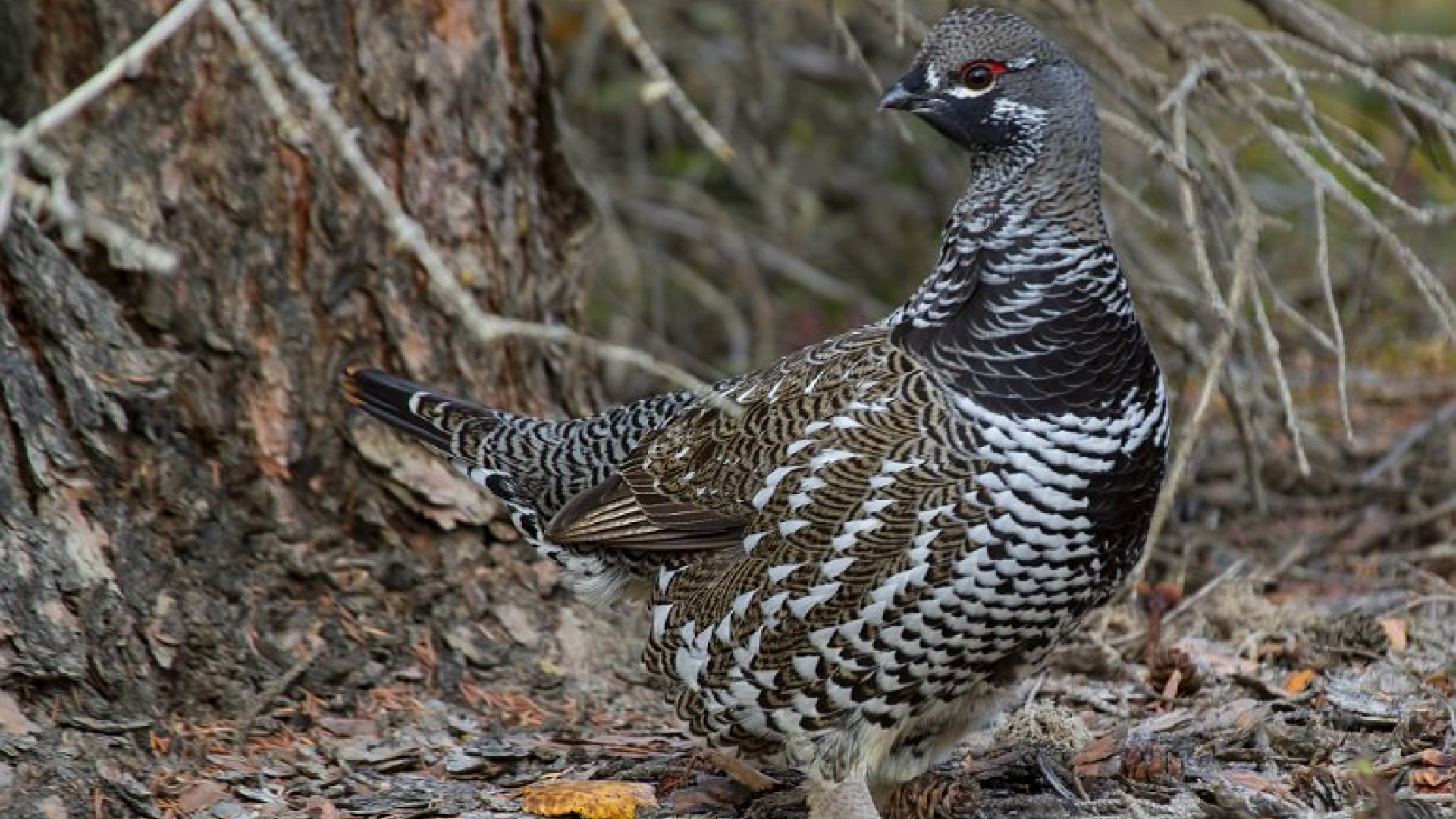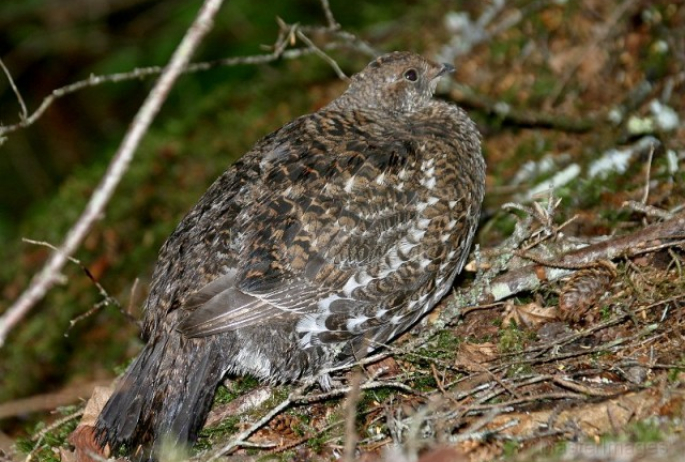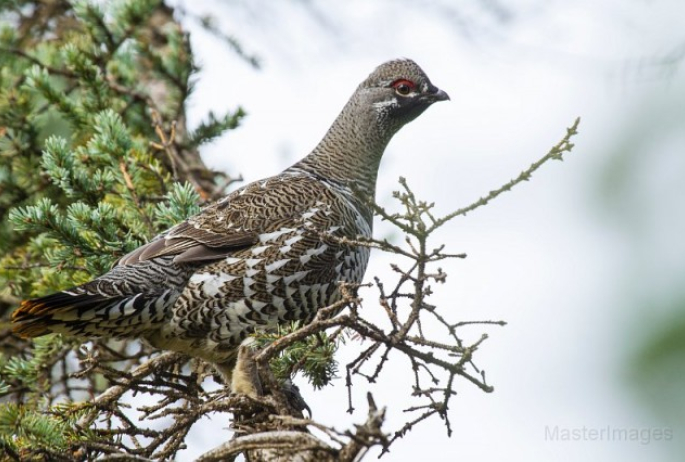I taught at Cranberry Lake Biological Station last week and took my students to Spring Pond Bog where we met the DEC spruce grouse research team. Although common further north in their range (I’ve seen them previously in places like Alaska), spruce grouse are listed as endangered in New York State and they are sought after quarry for birders as a result.
We cheated in our quest to find a grouse since the research team had a radio-collared bird and they were conducting a routine check of its status. That was the purpose of our visit anyway since the course was focused on ornithological field techniques, but we were happy that it did make it a lot easier to find one. Spruce grouse are well-known for inhabiting thick, wet, forested bogs, but ironically the bird we found was not far from an access point along the dirt road and it didn’t take long to find. It sat still in a tamarack (the needles of which make up a large percentage of the grouse’s diet at this time of year) and we quietly enjoyed the bird – a beautiful male – and several folks took photos. I had planned on taking photos too, but in the flurry of teaching and planning the course I must have left my camera on and my battery was dead. So I just admired the bird and enjoyed seeing it. 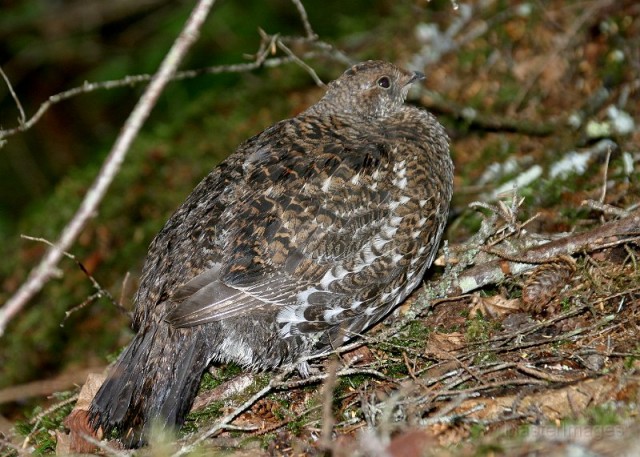
After working our way through the thick conifers back to the road, we got a real taste for grouse work when we helped the DEC crew with a grouse drive. The drive consisted of forming a wide string of people spaced every 20 or 30 meters and systematically moving through the woods for about 300 meters while a crew member played the calls of grouse chicks in the hopes of attracting the attention of a female. The idea of a drive is to flush a bird or find one with so many eyes covering a wide swath of ground. In this manner we all maneuvered our way through the forest, clawing our way through thickets, mucking through open boggy patches of water, ducking under limb after limb which twisting away from broken spruce branches, all the while shielding our eyes from branches and swatting biting insects.
Even with all that effort, we didn’t find any grouse in our searching, but we did find some grouse scat – evidence that there is at least one bird (if only the male we saw) in the area. Had we found a grouse, the DEC would have attempted to capture it and fit it with a radio transmitter. But surveys that don’t find much are still helpful in their conservation efforts, and we all learned just how tough grouse work is. It is not for couch potatoes. And for the record, it is not recommended for birders interested in finding a grouse in the region either. For one, beating through the brush could unnecessarily disturb the grouse if it isn’t helping with their conservation, and for another, it would be very easy for a birder to get turned around and completely lost if they ventured into such an inhospitable habitat unprepared. 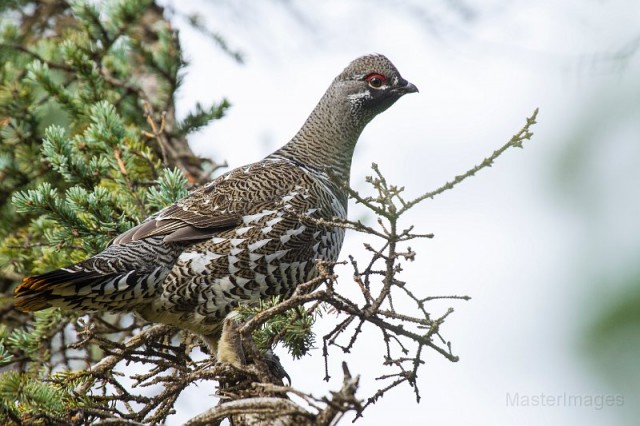
After our drive was complete, we discussed the conservation work the DEC is conducting to protect this species. With likely less than 100 birds in the state which are spread out in various patches of boreal habitat in the Adirondacks, biologists are working hard to protect what is left. Surveys and radio-tagged birds are critical to keep the finger of biologists on the pulse of the population.
Habitat loss and destruction was one of the big reasons why the grouse declined to begin with, and so protecting (and perhaps creating) suitable grouse habitat is important for the population to rebound. But with current numbers so low, another part of the recovery plan is the reintroduction of 10-12 birds from Canada which is planned for the next few weeks. This year’s group of birds is a trial run to help inform researchers regarding potential future reintroductions and to help bolster the current population. Hopefully the reintroduced birds – all fitted with radio collars – will survive to breed. If you are interested in learning more, the spruce grouse recovery plan can be downloaded at: https://www.dec.ny.gov/docs/wildlife_pdf/sprucegrouserecplan2013.pdf.
